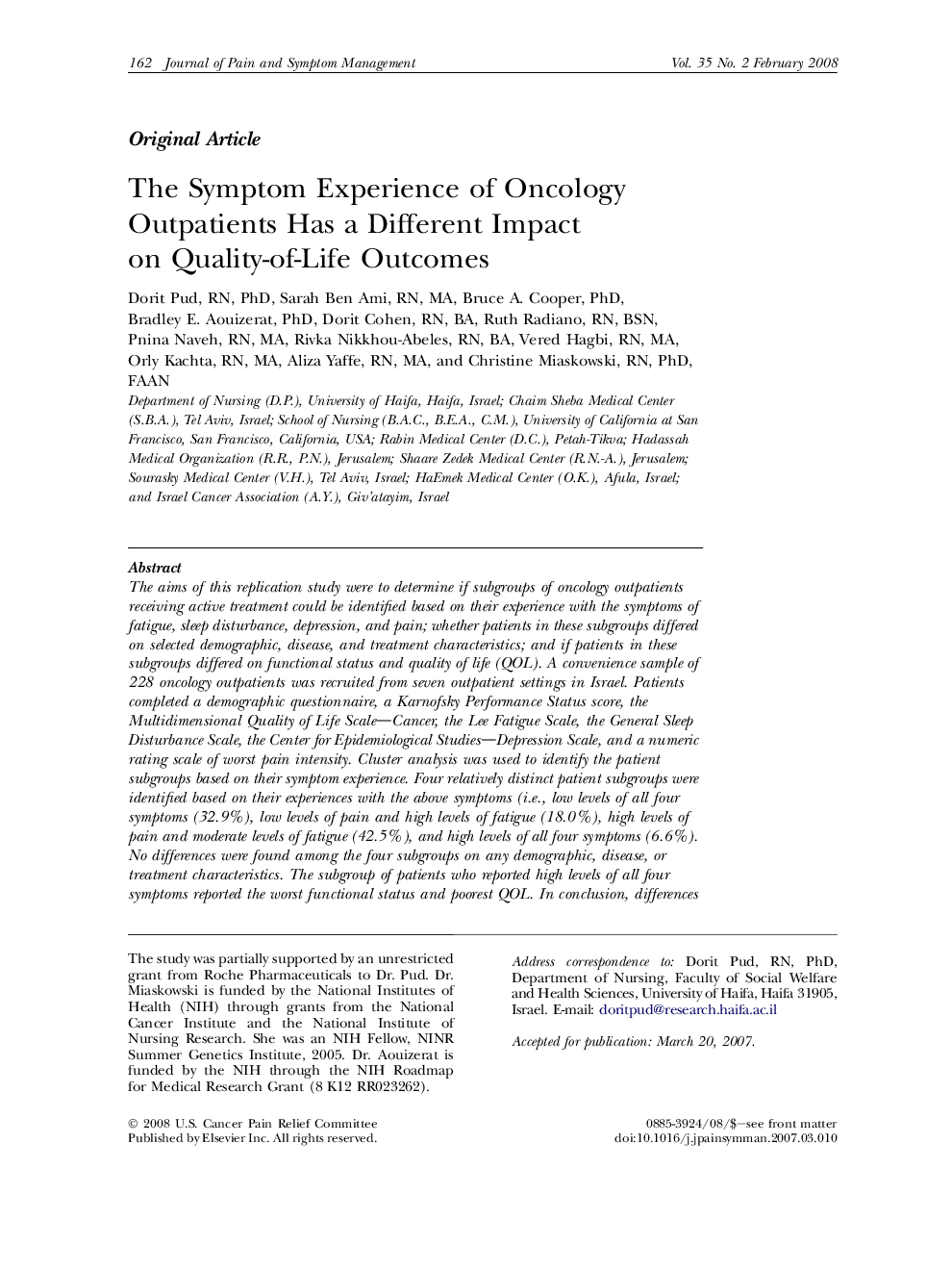| Article ID | Journal | Published Year | Pages | File Type |
|---|---|---|---|---|
| 2736446 | Journal of Pain and Symptom Management | 2008 | 9 Pages |
The aims of this replication study were to determine if subgroups of oncology outpatients receiving active treatment could be identified based on their experience with the symptoms of fatigue, sleep disturbance, depression, and pain; whether patients in these subgroups differed on selected demographic, disease, and treatment characteristics; and if patients in these subgroups differed on functional status and quality of life (QOL). A convenience sample of 228 oncology outpatients was recruited from seven outpatient settings in Israel. Patients completed a demographic questionnaire, a Karnofsky Performance Status score, the Multidimensional Quality of Life Scale—Cancer, the Lee Fatigue Scale, the General Sleep Disturbance Scale, the Center for Epidemiological Studies—Depression Scale, and a numeric rating scale of worst pain intensity. Cluster analysis was used to identify the patient subgroups based on their symptom experience. Four relatively distinct patient subgroups were identified based on their experiences with the above symptoms (i.e., low levels of all four symptoms (32.9%), low levels of pain and high levels of fatigue (18.0%), high levels of pain and moderate levels of fatigue (42.5%), and high levels of all four symptoms (6.6%). No differences were found among the four subgroups on any demographic, disease, or treatment characteristics. The subgroup of patients who reported high levels of all four symptoms reported the worst functional status and poorest QOL. In conclusion, differences in the symptom experience of oncology outpatients suggest that patients may harbor different phenotypic characteristics (e.g., environmental or physiologic) or genetic determinants for experiencing symptoms that are independent of demographic, disease, and treatment characteristics.
